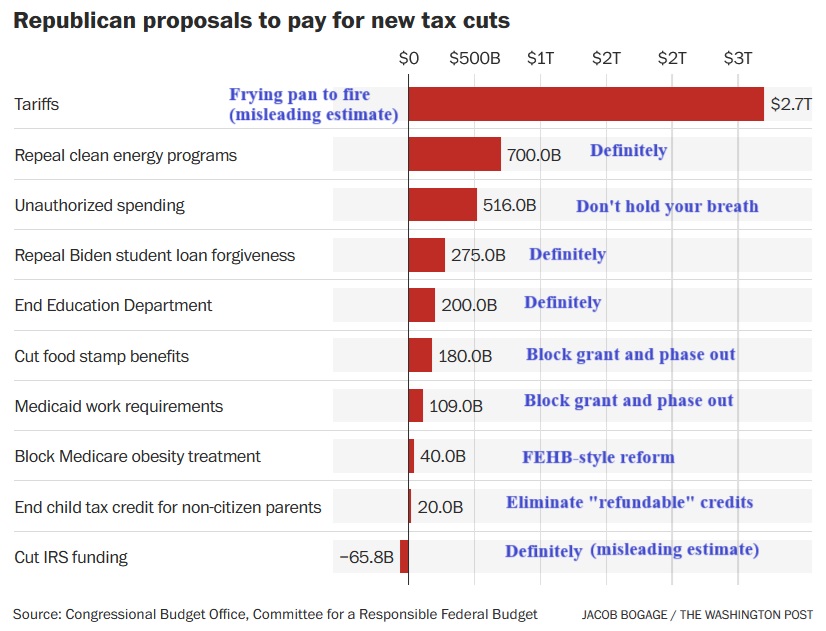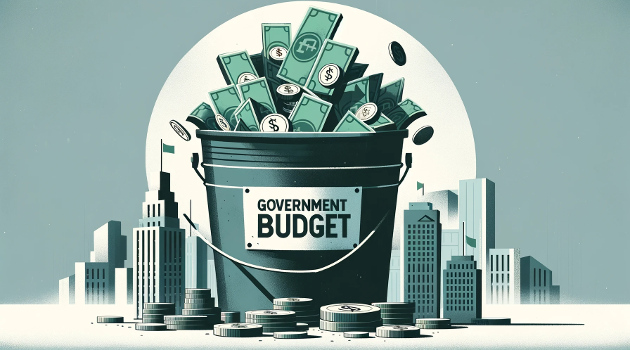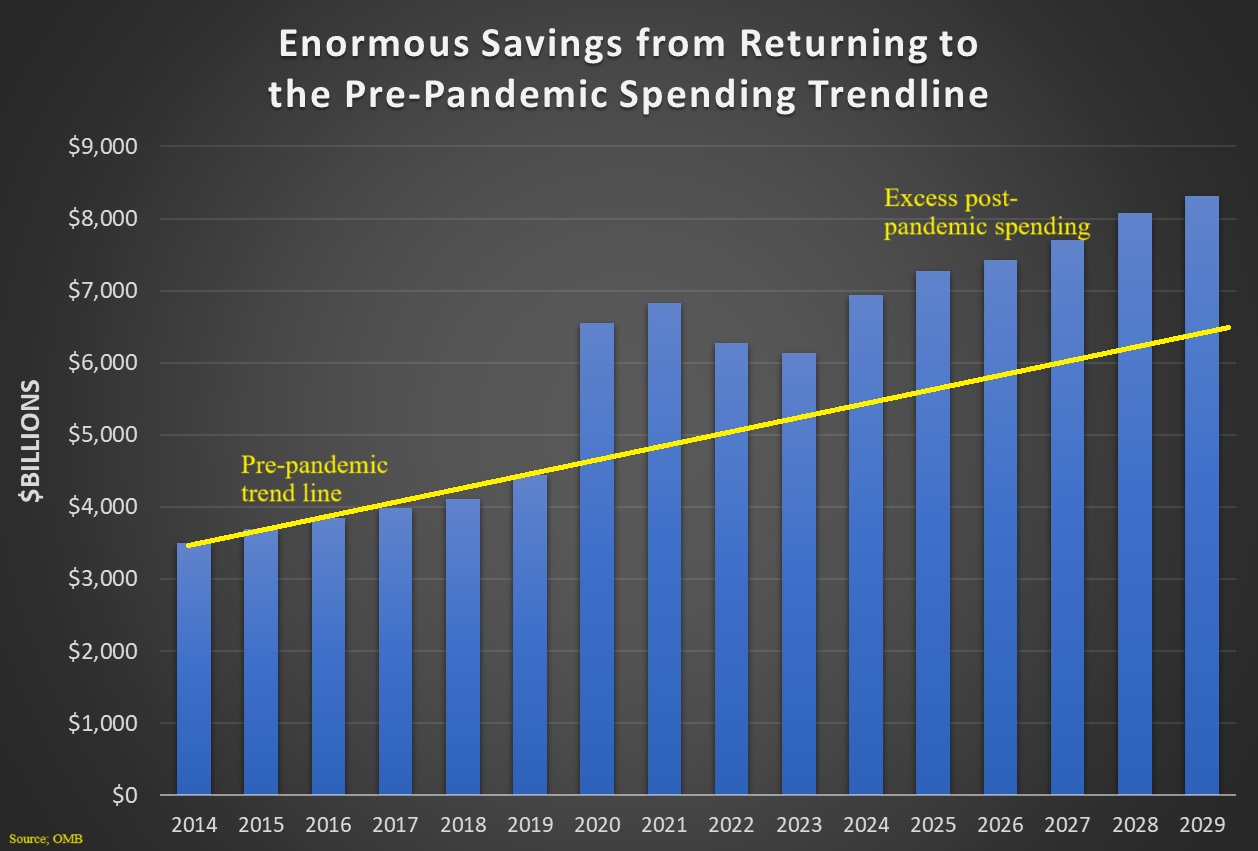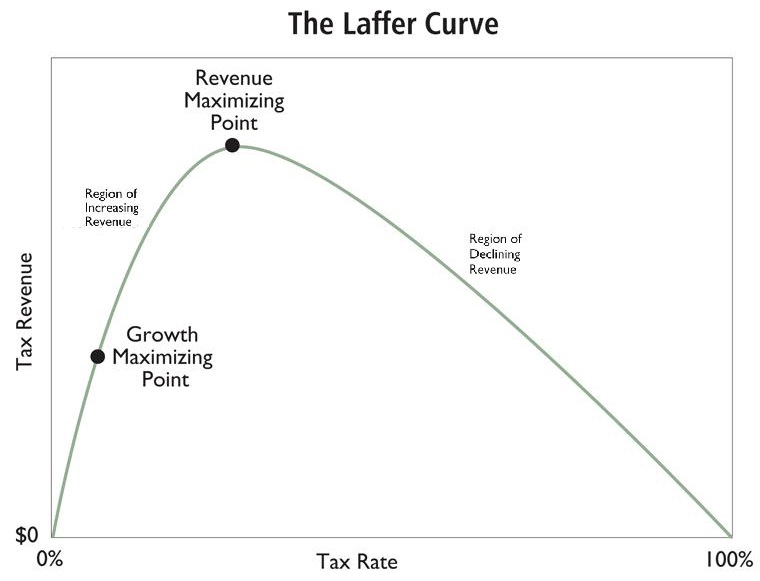Donald Trump played Santa Claus in his first term, with both tax cuts and big spending increases.
Unsurprisingly, he wants to play Santa Claus in his second term as well. But he faces a couple of big challenges.
First, as I wrote about two days ago, the spending baseline is now much higher, meaning there is less “fiscal space.” Though, to be accurate, we’ve moved from less-than-zero fiscal space to far-less-than-zero fiscal space.
Second, to avoid a Senate filibuster, Trump and congressional Republicans will want to use “reconciliation” legislation, but there are budget rules that require some degree of deficit neutrality using that legislative vehicle.
So how will Trump fit a size-18 fiscal agenda into a size-4 outfit?
Jacob Bogage of the Washington Post reports on the “offsets” that Republicans are considering. Here are some excerpts.
Advisers to President-elect Donald Trump and congressional Republicans have begun floating proposals to boost federal revenue and slash spending so their plans for major tax cuts and new security spending won’t further explode the $36.2 trillion national debt. …with most of Trump’s 2017 tax cuts set to expire at the end of 2025, the GOP plan to extend the law could increase the debt by close to $5 trillion over the next decade. (Nonpartisan scorekeepers project that Trump’s entire campaign platform would add up to $15 trillion to future borrowing.) To avoid busting the budget, Republican leaders are counting on savings from spending cuts and new revenue from tariffs.
The article contains a table showing the projected offsets.
I’ve added my commentary (in blue, just in case that’s not obvious) on the desirability/feasibility of the various options.

The biggest problem with the above list is that there won’t be much if any pro-growth impact of extending the 2017 tax cuts if the “pay-for” is a giant increase in trade taxes.
And don’t forget that there is a huge Laffer Curve for protectionist taxes since consumers can avoid such taxes by buying American-produced goods (indeed, that’s exactly what Trump wants).
So there will not be anywhere close to $2.7 trillion of additional revenue, especially when you also consider how the damaging impact of protectionism will mean less income tax revenue and less payroll tax revenue.
I normally like the idea of less revenue for Washington, but I want that to happen because we’re sliding down the left side of the Laffer Curve, not the right side.
Regarding the other offsets, some of them are good (getting rid of Biden’s green-energy pork and his student-loan bailout) while others are too timid (we should be block-granting Medicaid and food stamps, not tinkering with them).
I would love for Republicans to get rid of the Department of Education. I’m not holding my breath.
Last but not least, I obviously want to cut IRS funding, but I can’t resist pointing out that the revenue estimate is nonsensical.




